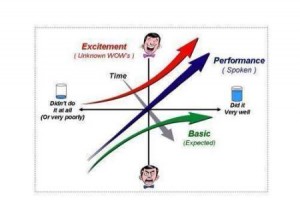Why Six Sigma Fails Detroit
Michigan desperately needs innovation to be competitive. When Japan started using Statistical Process Control (SPC) now known as Six Sigma, it was a competitive differentiator. In other words Japanese auto makers used quality and lean process as an innovation. Detroit has been feverishly implementing Six Sigma but they are still losing ground to the Japanese and now the Koreans and soon to be China. Why?
Six Sigma is a great thing but doing it as a “me-too”? only creates commoditization. Worse yet, the entire process of Six Sigma is about doing the same thing cheaper and cheaper. That leaves you in a death spiral to the lowest priced product, and little or no profits. Does that sound familiar?
Detroit, Michigan and the USA in general need innovation. Everyone knows that but almost no one is really doing it. The main reason is they don’t know how. What if innovation could be as predictable and systematic as Six Sigma? What if a company could create practical, profitable innovations on demand? Does that sound fantastic? Impossible?!? It is fantastic and it’s absolutely possible.
Predictive Innovation makes innovation:
- Efficient
- Low-Risk
- Controllable
- Repeatable
- Competitive
- Reliable
- Just-In-Time
Rather than looking at innovation as a magical creative activity it uses the very well defined study of System Theory and new breakthroughs in Information Theory to create a step-by-step process for innovation. How systematic is it? How about knowing there are 7 specific elements to innovate in any product or service and there are 15 types of alternatives for each element? When you realize that, you are guaranteed 105 innovations targeted precisely to your business needs and your customer’s desires.
When you use Predictive Innovation you can create an innovation strategy that causes your profit margins to increase overtime, risks to decrease and eliminate the threat of any competition.
Predictive Innovation has been used to create entire families of products, increase the value of investments, and solve seemingly impossible problems. It’s been applied to manufacturing, software, medicine, marketing, security, business strategy, politics, and entertainment.
Innovation Is Predictable
Right click and select Save As to download.
Yesterday I was told, “Innovation isn’t predictable. If it was predictable then they would already be doing it.” That statement shows why most people can’t innovate. Every assumption was wrong. Innovation is Predictable. Innovation MUST BE Predictable.
Innovation isn’t about new. Its about satisfying peoples unmet desires. Innovation doesn’t have to be new at all. And lots of new things don’t innovate. You must satisfy a desire. That is innovation.
As soon as you realize innovation is the act of satisfying someone’s unmet desire its obviously predictable. You can’t innovate doing the same thing. That doesn’t satisfy an unmet desire. So you automatically know a big don’t list. So you can find the innovation TO DO list.
Unmet desires are easy to find. Just ask, “What could make this better?” You will get a big list of possible improvements. And the designers, engineers and marketers knew a huge list of things they didn’t include in the current product. They chose the current features from a big list of possible features. They didn’t include every feature because some features like price and simplicity were needed. So before they ever made the current product they knew how to innovate it. They had a list of innovations.
So when you realize that Innovation is Predictable your next question is how do I predict the best innovation?




 Predictive Innovation Training
Predictive Innovation Training Predictive Innovation: Core Skills Book
Predictive Innovation: Core Skills Book RoundSquareTriangle.com
RoundSquareTriangle.com